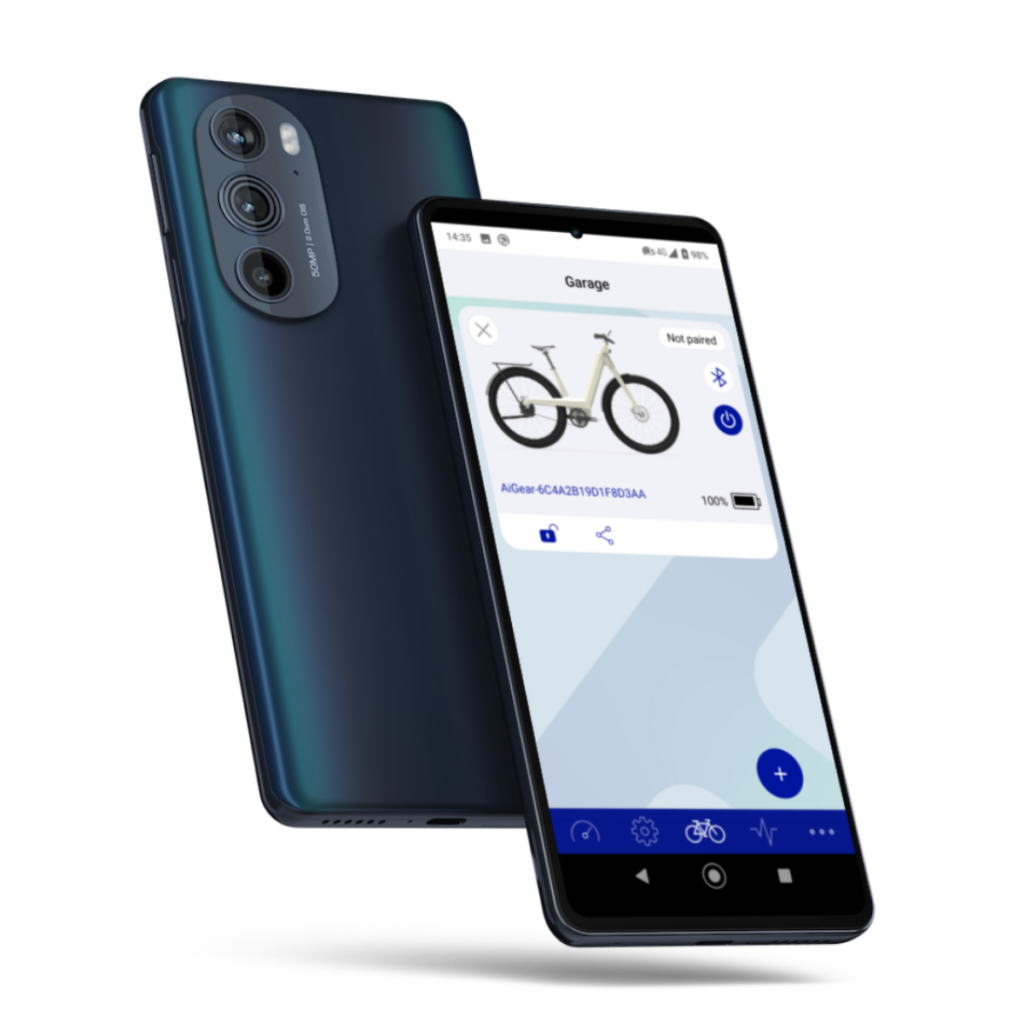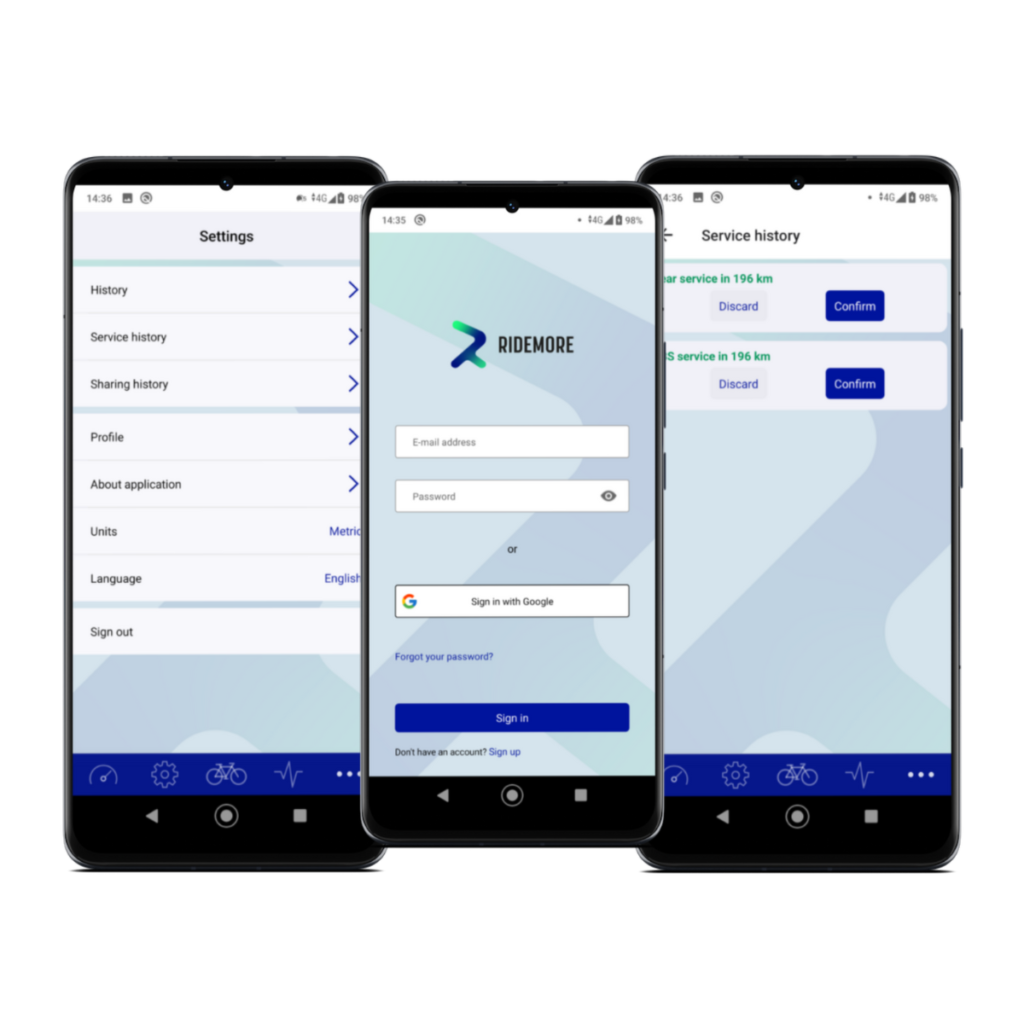
Engineo is a company that serves as a research and development center for the bicycle industry. The company manages new products comprehensively – from generating ideas to creating design documentation and implementing concepts into series production.
Engineo sought a reliable tech partner to develop an application to manage ultramodern and intelligent electric bikes.

Our task was to create a mobile application for cyclists using electric bikes, which required us to design it both for usability and safety. It was up to us to complete the product comprehensively – going from the design (business analysis, creation of the UX/UI layer) through coding and testing, as well as support for the launch of the finished application in the Google and Apple shops.
According to project assumptions, the application would, among other things, enable:
Ridemore was the result of combining the right people and competence
We plunged into the project with enthusiasm and energy – some of our team are keen cyclists! Taking the Engineo documentation as a starting point, we outlined the requirements. We did a workshop and a complete business analysis. This allowed us to get to know the product better, and the client made substantial enhancements while still at the concept stage. In addition, we created a number of view proposals, which made the application look very realistic.
Where did we focus our attention?
The development team was immediately augmented by a tester who prepared acceptance test scenarios on an ongoing basis. After each sprint, he checked the functionality produced so that any bugs were fixed at a very early stage.
Given the expectations gathered during the analysis, Ridemore was created using .Net and React Native technologies. We put the whole thing on the Google Cloud Platform, considering the possibilities offered by Firebase and Google Data Studio. Today, a bike can be added to the app by scanning an NFC or QR code with the phone. In addition, the app communicates with the bike’s motor using Bluetooth Low Energy, putting less strain on your phone’s battery.
Bartosz Cichocki, Software Architect
Are you curious about what it can do? The key is to create riding assistance profiles according to the rider’s age and experience level. The bike user chooses the one that ideally suits them, and the app controls the electric motor on the bike. Sounds pretty cool, right?
The app we developed and tested:
With a team of six specialists in various fields, Solwit delivered the mobile application in just six months. We began our collaboration with a workshop combined with business analysis. This clarified our expectations, allowing us to quickly move forward with the project. Over the course of the development process, we were in constant contact with the Solwit team. Changes were responded to regularly, and they suggested improvements as well.
Wojciech Szymański, R&D Manager, Engineo Sp. z o.o.
Notably, the software also allows you to create a garage, manage more bikes, rent them out, and monitor them.
We were responsible for business analysis, design, and development of the mobile application, as well as software testing. We also helped Engineo purchase Google’s cloud resources as part of our support.
Tell us exactly what you need.
Let's set the priorities and the order in which your software's functionalities / features / changes will be implemented.
What is the estimated timeframe for when you need to have your solution ready?
